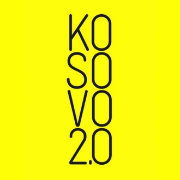Gazmend Gashi parked up in front of the cafe where we had agreed to meet; it was before the current lockdown made such encounters seem like a luxury.
In October 2019, The Central Bank of Kosovo had decided to raise the rates of third party car insurance — compulsory for vehicles in Kosovo — almost overnight, by 26.6%. It was a decision that immediately triggered a backlash from car owners in Kosovo.
“Now my company has to pay around 500 euros more for the cars than before,” Gashi says.
In total, his extended family owns seven vehicles; two are used for work in his aluminum company and the rest for private use by relatives.
Gashi is a member of a group on Facebook called Marakli t’Kerreve, which gathers around 118,000 car enthusiasts. They became more than just a social media group when the news about the car insurance hike broke.
On November 22, the group organized a protest in front of the Central Bank of Kosovo building in Prishtina. It might not have gathered a huge mass of people — those present could be counted in the dozens — but it had some effect; the Central Bank officials agreed to meet with some of the group’s representatives.
“To register a car, a driver now needs no less than 300 euros.”
Agan Hajdarhoxha, Marakli t’Kerreve
The following day, another group of car lovers, Speedomaniaks, organized a similar protest in front of the Central Bank building.
In February, representatives of Marakli t’Kerreve again met with Central Bank officials, including the Governor, Fehmi Mehmeti; various facilitation measures were discussed, including a proposal to lower the price increase to 21%. Nevertheless, the original price hike, which applies to the estimated 300,000 cars in Kosovo, has remained in place.
Agan Hajdarhoxha, one of the administrators of Marakli t’Kerreve, was one of those who met with the Central Bank governor, quickly becoming the voice of the protesters.
“To register a car, a driver now needs no less than 300 euros,” said Agan Hajdarhoxha, referring to the various costs involved in registering a car, such as conducting the required technical check and purchasing road tax.
The average monthly salary in the private sector is around 360 euros while in the public sector it is around 500 euros. Experts anticipate that the price increase will particularly impact on the budget of rural households, who already spend about 6% of their budget on transport.
Data from Central Bank records show how prices have increased for the various types of vehicles, which are categorized based on engine size.
For example, for vehicles with engines up to 750 cm3, the price has risen from 59 to 74 euros, while owners of vehicles with engines over 2,701 cm3 must now pay 313 euros, up from 247 euros.
While the decision entered into force in mid-November, Gashi says that he is still to pay the newly increased price since none of the current policies covering his cars have yet expired.
But, that day will soon come.
“If I had to pay 250 euros for an insurance policy before, now that goes to 310 euros. For just one car. This is a big problem, not all of us are being paid 12,000 euros per month like that guy,” says Gashi, referring sarcastically to recent news about a lawyer who once got paid 12,000 euros per month by the Post and Telecommunication of Kosovo.
Decision lacking transparency
On November 23, the Central Bank held a press conference to try to clarify the reasons behind its decision to raise car insurance prices.
Governor Mehmeti explained that the decision to review the prices had been recommended by the International Monetary Fund (IMF) in order to guarantee the stability of the sector. He also suggested that, while insurance prices should be reviewed each year — although not necessarily to increase prices — this hadn’t happened since 2001.
The 26.6% price increase, according to Mehmeti, was based on the rate of inflation between 2002 and 2018 and the increased cost of damages.
“The primary factor has been the rise in the damages done by vehicles … and the requests by the insurance companies have been continuous,” said Mehmeti, adding that insurance companies had requested an increase of 36 percent, a request denied by the Bank.
However the manner in which car insurance tariffs have been increased has drawn criticism from good governance monitors, who say that the decision making process has lacked transparency, was not conducted in line with IMF recommendations and hinders principles of free trade.
The appointed actuary had just two years experience as a licensed professional — the minimum experience required for this position.
A new report by GAP institute — produced as part of a new collaboration with K2.0 focused on monitoring institutional decisions — raises a number of problems with the decision to increase the prices, including the Bank’s failure to publish documentation related to its decision making process.
Bank documentation seen by GAP, which ultimately secured limited access after publicly raising its concerns, reportedly indicates that the 26.6% figure was reached solely by considering increases in inflation.
The GAP report also points out that in 2013 the IMF had recommended the Central Bank to hire two licensed actuaries; these are experts who are able to carry out important technical analysis and projections, which then provide the basis for tariff review and risk prevision.
Despite the IMF recommendation, the Bank did not hire an actuary until April 2017 — four years later — and then hired just one. Even then, the appointed actuary had just two years experience as a licensed professional — the minimum experience required for this position — from the moment of obtaining the license to drafting the report that recommended the price increase.
Questions were also raised about when insurance rates had last been reviewed, with IMF reports indicating that this took place in 2011, not 2001 as stated by the Bank in its justification of the time period that had been considered when calculating the rate of inflation.
The GAP report highlights that the Bank’s stated reasoning of having calculated the price increase based on inflation alone, itself ignored other factors that both its own regulations and IMF recommendations state should have been considered in the analysis. These include the risk profile, damages and the coefficient of the compensation fund — in other words, the amount paid out in claims compared to the amount received in premiums.
Kosovo’s insurance sector is smaller than that of other countries in the region with the lowest insurance premium per capita, and the country has a large number of unregistered vehicles — around 110,000. GAP’s report states that three out of Kosovo’s 14 licensed insurance companies were under-capitalized in 2019.
Both the Bank and the insurance sector have suggested that these other factors were important considerations in the need to increase car insurance rates, raising further questions as to why the implemented raise was reportedly based solely on inflation.
The Insurance Association of Kosovo said that insurance companies have continued to work with negative annual balances.
According to Sokol Havolli, deputy governor of the Central Bank, the insurance sector was at risk of not being able to cover for accidents because some companies weren’t able to maintain financial stability in order to properly fulfill their function.
“The average cost of damages after the war was 400 to 500 euros, now it’s around 1,300 euros while the capacity of the companies to cover the damage has remained the same,” Havolli said in a TV debate held by Rubikon on November 27 last year.
In a press release around the time of the protests in November, the Insurance Association of Kosovo said that insurance companies have continued to work with negative annual balances because of the level of money that insurance companies are liable to pay when covering accident damages.
K2.0 requested a copy of the decision to raise the rate of car insurance, as well as the associated actuary report from the Central Bank, but was told that the documents are classified as they are commercially sensitive.
Violating competition laws
One of the other biggest concerns raised by GAP is the Bank’s decision to raise prices uniformly for all companies and customers.
They say this goes against the legal objectives of the Central Bank, which state that the institution should function based on the principles of a market economy and free trade, and that it also violates the Law on Protection of Competition.
These concerns were similarly raised by the Kosovo Competition Authority (KCA) a month before the decision to increase car insurance rates was taken, after it was asked by the Bank to provide a professional opinion.
In that opinion, the KCA concluded that assigning a single set of prices for all insurance companies uniformly stepped on the principles of free competition.
“The interaction of insurance companies [should] be avoided in the process of calculating / setting premiums by not adopting and directing toward the same price, but this process should [instead] be based on data that is sourced independently by insurance companies,” the KCA stated.
“Depending on sales strategy, the capacities of the company, and a wide range of parameters that may be taken into account such as the driver’s age, the age of the car, the type of car, technical characteristics, the history of damages and many other factors, the pricing should always be done in an independent manner.”
Given the decision to increase car insurance was taken by a public institution, the KCA does not have the authority to penalize the insurance companies.
If companies violate the Law on Protection of Competition, punitive action may be taken to fine them up to 30% of their relevant revenues. However, the GAP report says that given the decision to increase car insurance was taken by a public institution, the KCA does not have the authority to penalize the insurance companies.
The Central Bank failed to respond to any of K2.0’s emails inviting them to comment on the criticisms levied against it.
Meanwhile, Hajdarhoxha is still hopeful that the increase will be reduced to 21%.
And he says members of the Marakli t’Kerreve group are also keen for additional changes to be made to the way car insurance functions in Kosovo. For example, the group wants to push for car insurance to be categorized as personal insurance for each driver, and not for the car owner, as is currently the case.
They say that this would help to facilitate a fairer bonus-malus (or “no-claims bonus”) system, which is intended to give discounts on insurance to drivers who haven’t caused accidents in the previous year of registration. Under their proposed revision to the insurance system, when accidents are caused, the additional insurance charges the following year would have to be paid by the driver at the time of the accident, not by the owner of the car.
For now, however, their primary aim is to make car insurance more affordable.
“The increase is too much,” Hajdarhoxha says. “People are getting bank loans to pay these fees already.”K
Feature image: Atdhe Mulla / K2.0.



This article has been produced with the assistance of the European Union. The contents of this publication are the sole responsibility of Kosovo 2.0 and GAP Institute and can in no way be taken to reflect the views of the European Union.



